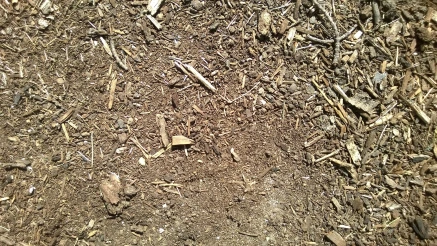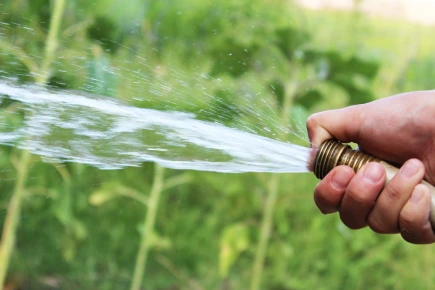Since spring is here in all of its glory, fruit trees and other plants are are alive and (hopefully) thriving. Fruit trees are fun to grow and are unique in their care requirements. Here are five easy things you can do to help your new fruit trees get off to a great start:
Prune
Fruit trees of all ages require regular pruning. Different types of fruit trees have require different pruning methods. Newly planted fruit trees should be pruned at planting. For smaller trees, about a third of the tree should be removed; for larger trees (in the 4-5′ range), anywhere from a third to a half of the tree should be pruned. This is painful for many new fruit tree growers and I get that. I just mention it here because if you do it, it will help that fruit tree (or trees) grow more vigorously, since it removes the above ground portion of the tree to compensate for any root biomass that was lost during transplanting.
But if you don’t want to do that (or if it’s spring and it’s too late to do it this year), don’t despair! Prune the tree properly (for you particular type of fruit tree) once it’s dormant during next winter and you’ll be good to go. We have some pruning tutorials here.

During the growing season, prune off any branch that appears diseased and prune off anything that is growing below the graft union. Otherwise, leave the tree unpruned while it’s growing.

Mulch
Every newly planted fruit tree needs mulch around it. Mulch helps hold in moisture and helps prevent weeds from competing with young fruit trees. Ideal mulches include compost, hay or straw, pine straw (if your soil isn’t too acidic), dried grass clippings, or shredded leaves. Other products such as pecan hulls or composted shredded bark will also work. Apply a 3-4” thick layer of mulch extending a least a foot around a newly planted tree, keeping the material just barely away from the graft union. Apply a new layer of mulch on the old one at least once a year or whenever weeds start to grow through the mulch layer.

Fertilize (or don’t)
Newly planted fruit trees are shallow-rooted, which means that are susceptible to fertilizer-caused root burning. In many soils, a layer of mulch that includes composted manure is a sufficient first year fertilizer. If the trees begin to show yellowing leaves or slower growth, new fruit trees can be fertilized lightly with a high phosphorus fertilizer (0-25-0 for example). The fertilizer should not come directly into contact with plant roots; it should filter through the soil. Certain water-soluble fertilizers are fine to use, since they filter through the soil. Just mix the fertilizer so that it is at 50% or 75% strength.
Organic fertilizers, since they are released slowly over time, are ideal for new fruit trees. Just make sure that the fertilizer doesn’t come into contact with the tree roots. Fertilizer spikes, made to be placed in the ground near the roots of a tree, should not be used on new fruit tree plantings.
Spray (if needed)
There’s an old proverb that says “The best fertilizer is the gardener’s shadow”; this is also the best method of pest control for fruit trees. Daily or at least weekly inspection of your trees during the growing season will help you stay on top of any insect or disease issues that arise. And they will arise, especially in the heat of the summer, or during a drought when everything is drying up except your trees and garden. Insecticidal soap is a good all-around organic choice that will help control many insect pests. There are numerous organic sprays that are effect in controlling fruit tree diseases. New fruit trees planted in an area for the first time often have minimal disease issues during their first season of growth. If diseases do appear, organic and conventional fungicides are available at most big box DIY retailers. Mother Earth News describes a very unique fruit disease spray (that we’ve honestly never tried) made with human urine… (http://www.motherearthnews.com/organic-gardening/garden-safe-fungicide-zmaz83mazraw)
All fruit trees issues are much more easily controlled if caught early.
Water
Because fruit trees are becoming established in the soil over their first year, watering is critical for fruit tree survival during the first growing season. Without roots down deep in the soil, the fruit tree is at the mercy of the soil moisture in the top few inches of soil. These top few inches are always first to go dry during a dry spell. Fruit trees can be watered using many different methods, including drip irrigation or just a regular water hose held over the roots until they’re saturated. Fruit tree water needs vary with air temperature, humidity, and soil type. If the trees receive at least 1 inch of water per week during the growing season, then they will generally do fine. The soil must be well-drained, however, since fruit trees will quickly develop root diseases in saturated soil. Fruit trees have best fruit production when they are not stressed by dry soil or overly saturated soil. Finding the right balance is tricky, but this website from the University of California (http://homeorchard.ucanr.edu/The_Big_Picture/Irrigation/).
The easiest way to maintain the proper soil moisture for a fruit tree is the plant it in well-drained soil and then to water it deeply twice a week during any dry spells in the summer. Once the trees are several years old, they will have deeper roots that can access water deeper in the soil.
